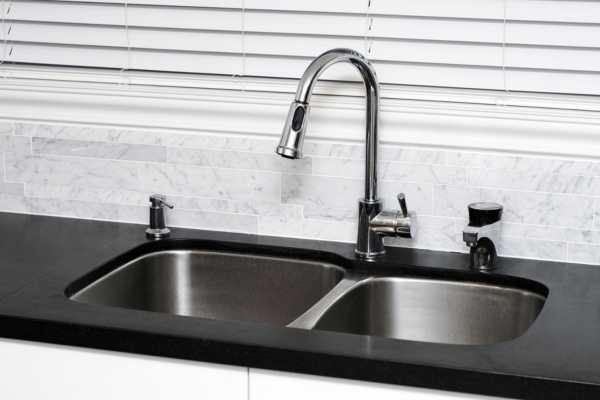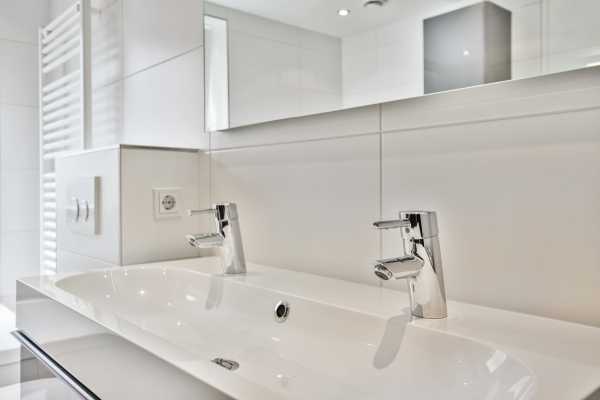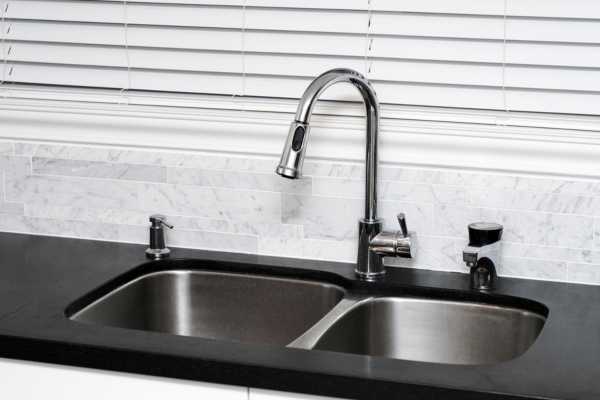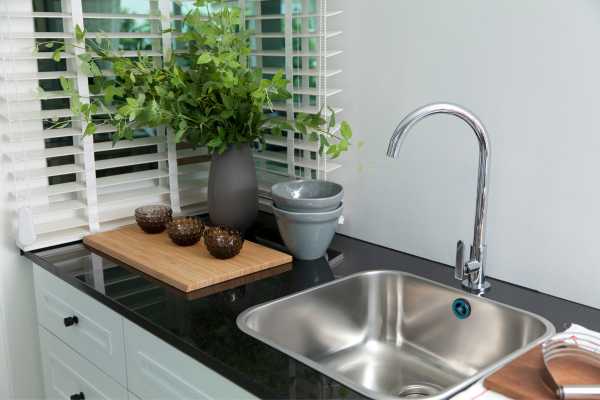Choosing the right kitchen sink is essential for functionality and design, but understanding the standard size is key to making the best decision. Typically, the standard size of a kitchen sink varies based on the type, ranging from compact single-basin options to larger double-basin designs. In this guide, we’ll explore the dimensions that define standard kitchen sinks, helping you find the perfect fit for your space and needs. Whether you’re upgrading or starting fresh, knowing these measurements ensures a seamless installation and optimal usability. Join us as we dive into what makes a kitchen sink standard and how to choose one that complements your kitchen perfectly!
What Defines the Standard Size of a Kitchen Sink?

The standard size of a kitchen sink is defined by its width, depth, and configuration, catering to both functionality and aesthetics. Most standard sinks measure 22 to 30 inches wide, with a depth ranging from 6 to 10 inches. These dimensions are designed to fit into common countertop and cabinet sizes, making installation straightforward. The type of sink—single or double basin—also influences the standard size, with single-basin sinks often being more compact and double-basin sinks providing additional workspace. Factors such as kitchen layout, daily usage, and personal preferences also play a role in determining the ideal size for your needs.
Typical Measurements for Single-Basin Sinks
Single-basin sinks are a popular choice for their simplicity and versatility, making them ideal for a variety of kitchen layouts. The typical dimensions for these sinks range from 24 to 36 inches in length, with widths between 18 and 22 inches. Depths commonly vary from 8 to 10 inches, providing ample space for washing larger pots and pans. Compact versions are available for smaller kitchens, while larger models suit open layouts or high-use areas. These measurements ensure practicality while complementing modern and traditional kitchen designs alike. When selecting a single-basin sink, consider your countertop space and daily needs to find the perfect balance of size and functionality.
Standard Dimensions for Double-Basin Sinks

Double-basin sinks are a popular choice for homeowners seeking versatility in their kitchen. These sinks typically feature widths ranging from 32 to 36 inches, accommodating various kitchen layouts. The depth usually measures 8 to 10 inches, offering ample space for washing and rinsing simultaneously. Each basin may vary in size, with one larger basin for washing dishes and a smaller one for tasks like soaking or prepping food. This dual functionality makes them ideal for busy households. When selecting a double-basin sink, consider your countertop space and cabinet dimensions to ensure a proper fit. Choosing the right size enhances efficiency while maintaining a balanced kitchen aesthetic.
Compact Kitchen Sinks: Perfect for Small Spaces
Compact kitchen sinks are an excellent solution for small spaces, offering functionality without overwhelming your countertop. These sinks typically range from 15 to 24 inches in width, making them ideal for apartments, tiny homes, or secondary prep areas. Despite their smaller size, compact sinks are designed to accommodate daily tasks like washing dishes or prepping meals efficiently. They are available in various styles, including single-basin and undermount designs, to suit different aesthetic and practical needs. Paired with space-saving accessories like cutting boards or drying racks, compact sinks maximize usability in limited spaces. Choosing the right compact sink ensures both style and practicality for your small kitchen.
Oversized Kitchen Sinks: Features and Benefits

Oversized kitchen sinks offer enhanced functionality and style, making them a popular choice for busy households and avid cooks. With their larger dimensions, these sinks can easily accommodate oversized pots, pans, and trays, simplifying cleanup after big meals. Their spacious design also allows for multitasking, such as washing dishes on one side while prepping vegetables on the other. Oversized sinks are often crafted from durable materials like stainless steel or fireclay, ensuring long-lasting performance. Ideal for large kitchens, they add a touch of luxury while boosting efficiency. Whether you have a bustling family kitchen or love hosting gatherings, an oversized sink delivers both practicality and visual appeal.How to Measure Your Kitchen Space for the Right Sink Size
Measuring your kitchen space accurately ensures you select a sink that fits perfectly and functions efficiently. Start by determining the available countertop area, including the width and depth of the cabinet where the sink will be installed. Use a tape measure to record the interior dimensions of the cabinet to ensure compatibility with your chosen sink size. Remember to account for plumbing fixtures and additional accessories like garbage disposals. It’s also crucial to consider the depth of the sink, ensuring it fits comfortably without interfering with storage space beneath. Precise measurements save time and prevent costly errors, helping you choose the right sink for your kitchen layout effortlessly.
Standard Sink Depth: What You Need to Know
The depth of a kitchen sink plays a vital role in its functionality, with standard depths typically ranging between 7 to 10 inches. A deeper sink is ideal for accommodating large pots and pans, while a shallower sink may be more comfortable for daily use, especially in households with multiple users. When selecting the right depth, consider factors such as countertop height, user comfort, and the primary purpose of the sink. Deeper sinks are better for minimizing splashes but may require more bending. Balancing practicality and convenience will ensure the sink meets your needs, enhancing both the usability and overall efficiency of your kitchen space.
Factors to Consider When Choosing a Sink Size

Selecting the right sink size involves considering various factors to ensure it meets your needs. Start by evaluating your kitchen’s countertop space and layout to determine what size can be accommodated without overcrowding. Think about your cooking and cleaning habits—larger households or avid cooks may benefit from a double-basin or deeper sink. The cabinet size below the sink is another critical factor, as it must support the chosen dimensions. Additionally, consider the sink’s purpose; a prep sink for small tasks will differ from a primary kitchen sink. Balancing functionality, style, and available space helps you choose the perfect sink size for your kitchen.
Popular Materials and Their Impact on Sink Dimensions
The material of a kitchen sink plays a significant role in determining its dimensions and overall functionality. Stainless steel sinks are lightweight, versatile, and often come in a variety of sizes to fit most kitchens. Porcelain sinks, known for their classic appeal, tend to be deeper but require careful handling due to their weight. Granite composite sinks, durable and stylish, often feature slightly thicker walls, impacting available basin space. Fireclay sinks, popular in farmhouse-style kitchens, are typically larger and heavier, requiring reinforced countertops. Each material not only affects the sink’s durability and aesthetics but also its size options, making it essential to choose one that matches your kitchen’s design and requirements.
Custom vs. Standard Kitchen Sinks: Pros and Cons

When deciding between custom and standard kitchen sinks, it’s important to weigh the advantages and limitations of each option. Standard sinks are widely available, cost-effective, and designed to fit most kitchen layouts, making them a convenient choice for quick installations. On the other hand, custom sinks offer tailored dimensions, unique designs, and specialized features, allowing homeowners to create a perfect match for their specific kitchen style and functionality needs. However, custom options often come with higher costs and longer wait times for production and installation. Choosing between the two depends on your budget, timeline, and desire for a personalized touch versus a practical, ready-made solution.
Conclusion
Understanding the standard size of a kitchen sink is crucial for creating a functional and stylish kitchen. Standard sizes offer versatility, fitting seamlessly into most layouts while providing ample space for daily tasks. From single-basin to double-basin designs, knowing the typical dimensions ensures a hassle-free installation and optimal use. Whether you opt for a standard sink or explore custom options, choosing the right size is key to maximizing efficiency and complementing your kitchen’s aesthetic. By considering your space, lifestyle, and design preferences, you can confidently select a sink that meets your needs. Invest in the right kitchen sink today for a blend of practicality and timeless appeal.
